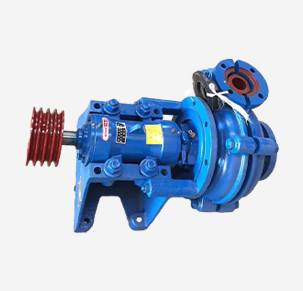Khmer
- Afrikaans
- Albanian
- Amharic
- Arabic
- Armenian
- Azerbaijani
- Basque
- Belarusian
- Bengali
- Bosnian
- Bulgarian
- Catalan
- Cebuano
- Corsican
- Croatian
- Czech
- Danish
- Dutch
- English
- Esperanto
- Estonian
- Finnish
- French
- Frisian
- Galician
- Georgian
- German
- Greek
- Gujarati
- Haitian Creole
- hausa
- hawaiian
- Hebrew
- Hindi
- Miao
- Hungarian
- Icelandic
- igbo
- Indonesian
- irish
- Italian
- Japanese
- Javanese
- Kannada
- kazakh
- Khmer
- Rwandese
- Korean
- Kurdish
- Kyrgyz
- Lao
- Latin
- Latvian
- Lithuanian
- Luxembourgish
- Macedonian
- Malgashi
- Malay
- Malayalam
- Maltese
- Maori
- Marathi
- Mongolian
- Myanmar
- Nepali
- Norwegian
- Norwegian
- Occitan
- Pashto
- Persian
- Polish
- Portuguese
- Punjabi
- Romanian
- Russian
- Samoan
- Scottish Gaelic
- Serbian
- Sesotho
- Shona
- Sindhi
- Sinhala
- Slovak
- Slovenian
- Somali
- Spanish
- Sundanese
- Swahili
- Swedish
- Tagalog
- Tajik
- Tamil
- Tatar
- Telugu
- Thai
- Turkish
- Turkmen
- Ukrainian
- Urdu
- Uighur
- Uzbek
- Vietnamese
- Welsh
- Bantu
- Yiddish
- Yoruba
- Zulu
Telephone: +86 13120555503
Email: frank@cypump.com
ធ្នូ . 13, 2024 14:26 Back to list
sewage sump pump
Understanding Sewage Sump Pumps A Comprehensive Guide
Sewage sump pumps play a crucial role in maintaining the sanitation and functionality of homes, especially those that are located in areas prone to flooding or where the plumbing system requires assistance in operating efficiently. This article delves into what sewage sump pumps are, their importance, types, and maintenance tips to ensure they operate effectively.
What is a Sewage Sump Pump?
A sewage sump pump is a specific type of pump designed to remove wastewater and sewage from residential or commercial properties. It is typically installed in a sump pit, which is a basin dug into the ground to collect unwanted water. The pump activates when the water level in the pit rises to a certain point, effectively preventing overflow and potential damage.
Importance of Sewage Sump Pumps
1. Flood Prevention For homes located in flood-prone areas or basements that are below the water table, sewage sump pumps are invaluable. They help to lower the water levels in the sump pit, preventing flooding that can cause significant damage to property and belongings.
2. Sanitation The efficient removal of sewage and wastewater ensures that homes remain sanitary. Accumulation of sewage can lead to unsanitary conditions, fostering the growth of bacteria and other pathogens that can pose health risks.
3. Property Protection By removing excess water, sewage pumps protect foundations from erosion and cracks that can arise due to constant moisture. This not only safeguards the structure of a home but also maintains its value.
4. Waste Management Sewage sump pumps ensure that wastewater is directed to the appropriate sewage system or septic tank, allowing for efficient waste management without interfering with the household’s plumbing.
Types of Sewage Sump Pumps
There are two main types of sewage pumps submersible pumps and pedestal pumps.
- Submersible Pumps These pumps are designed to be submerged in the water. They are efficient and quieter than pedestal pumps, making them a popular choice for residential applications. Their sealed design helps prevent electrical components from getting wet.
- Pedestal Pumps These pumps stand above the sump pit and use a long rod to connect the motor to the impeller in the pit. Although they are not as efficient as submersible pumps, they are easier to access for maintenance and repairs.
sewage sump pump

Key Features to Consider When Choosing a Sewage Sump Pump
When selecting a sewage sump pump, several features should be taken into account
1. Horsepower The power of the pump, typically measured in horsepower (HP), determines how quickly and effectively the pump can remove sewage. For most residential applications, a pump with a horsepower of ½ to 1 HP is sufficient.
2. Automatic vs. Manual Automatic pumps activate when water levels rise, while manual pumps require human intervention. Automatic pumps are convenient, especially in emergencies.
3. Float Switch A reliable float switch is crucial for automatic operation. It should be durable and capable of handling the weight of sewage to provide dependable activation.
4. Material Sewage pumps are often made from corrosion-resistant materials to withstand harsh environments. Stainless steel or cast iron offers better longevity compared to plastic.
Maintenance Tips for Sewage Sump Pumps
To ensure that a sewage sump pump operates efficiently and lasts for years, regular maintenance is essential
1. Inspect Regularly Check the pump for any signs of wear and tear, as well as the condition of the float switch.
2. Clean the Sump Pit Regularly clean the sump pit to avoid debris build-up, which can affect the pump's performance.
3. Test the Pump Periodically test the pump by pouring water into the pit to see if it activates and removes the water effectively.
4. Check the Electrical Connections Ensure that the power supply and connections are secure and in good condition.
In conclusion, sewage sump pumps are a vital component in managing wastewater and preventing flooding in homes. By understanding their function, selecting the appropriate type, and performing regular maintenance, homeowners can ensure a clean and safe living environment.
-
High-Performance Air Pumps for Sand & Gravel | Efficient Transport
NewsAug.03,2025
-
ISG Series Vertical Pipeline Pump - Chi Yuan Pumps Co., LTD.|Energy Efficiency, Corrosion Resistance
NewsAug.03,2025
-
ISG Series Pipeline Pump - Chi Yuan Pumps | Energy Efficiency&Compact Design
NewsAug.03,2025
-
ISG Series Vertical Pipeline Pump - Chi Yuan Pumps Co., LTD.|High Efficiency, Low Noise, Durable
NewsAug.02,2025
-
ISG Series Vertical Pipeline Pump - Chi Yuan Pumps | High Efficiency, Low Noise
NewsAug.02,2025
-
ISG Series Vertical Pipeline Pump- Chi Yuan Pumps Co., LTD.|High Efficiency&Compact Design
NewsAug.02,2025










